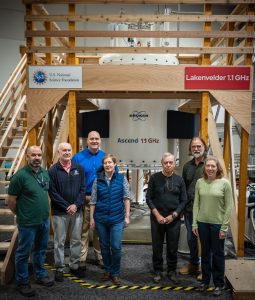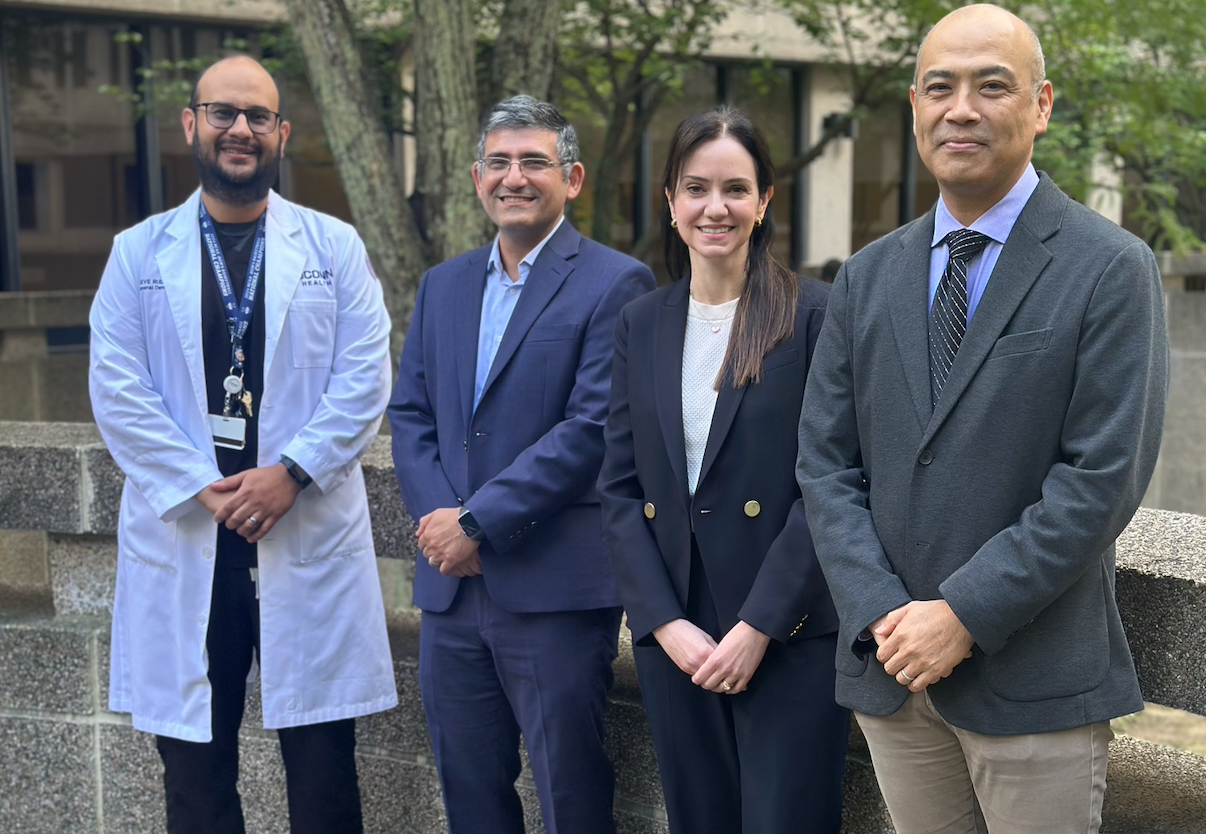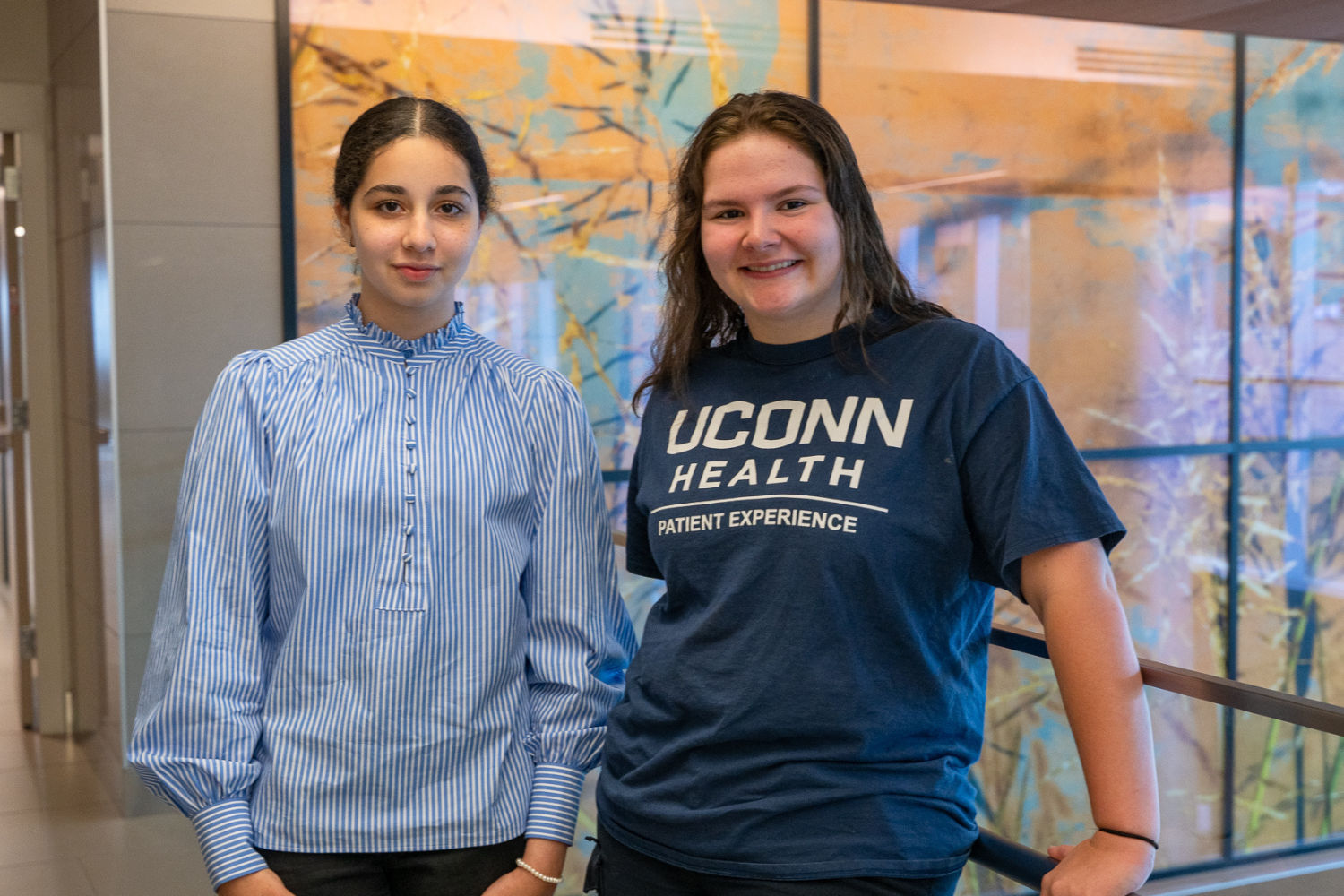UConn-Led Network Expands NMR Reach
Funded by the National Science Foundation and led by UConn, the Network for Advanced NMR (NAN) is expanding its reach with the addition of three new facility nodes in the Midwest and on the West Coast.
This week, NAN announced that The Ohio State University, the University of Nebraska–Lincoln, and the University of California–Santa Cruz have joined the Network. Together, these facilities contribute 16 NMR spectrometers to the NAN portal, bringing the total number of connected instruments to 36 nationwide.
NMR, which stands for nuclear magnetic resonance, is an analytic method with broad applications in many scientific disciplines, including structural biology, chemistry, and material science. NMR also is developing into an important diagnostic tool in medicine. By analyzing bodily fluids such as urine, doctors can make earlier diagnoses of conditions such as cardiovascular disease, cancer, and biomarkers indicating chronic kidney disease.
By linking the instruments to the Network, UConn and its founding NAN partners the University of Wisconsin-Madison and University of Georgia are working to increase access to high-field NMR instrumentation by making them visible and accessible to researchers across the country.

“This expansion represents a major step toward democratizing NMR by making resources broadly accessible to researchers across the U.S.,” said Jeffrey C. Hoch, Professor of Molecular Biology and Biophysics at UConn Health and director of the Gregory P. Mullen NMR Structural Biology Facility.
In addition to expanding access to instrumentation, NAN is creating the first at-scale repository of experimental NMR data by automatically harvesting datasets from participating facilities. This unprecedented resource preserves valuable data, promotes reproducibility, and enables new modes of discovery by making experimental results available to the wider scientific community.
The expansion is supported by the National Science Foundation Midscale Research Infrastructure program, which awarded a $40 million grant to UConn to establish NAN. This funding supported development of the NAN cyberinfrastructure and included the first open-access 1.1 GHz NMR spectrometers in the U.S. at the University of Wisconsin–Madison and the University of Georgia. The nation’s first 1.2 GHz NMR spectrometer, located at Ohio State, was funded separately by another NSF Midscale RI grant.
NAN anticipates further expansion with additional facilities, advancing the NAN mission to make high-field NMR broadly accessible and to support transformative research across the sciences.
“NMR is one of the most versatile experimental scientific techniques, with applications spanning structural biology, chemistry, materials science, metabolomics, and medicine. It can be applied to both solutions and solids, making it uniquely powerful,” said Mark Maciejewski, assistant professor of Molecular Biology and Biophysics at UConn.
NMR also has uses in areas such as artificial intelligence, decarbonization, and energy production and storage.
NAN is supported by NSF grants 1946970 and 2529058. The 1.2 GHz spectrometer at Ohio State is supported by NSF grant 1935913.
Latest UConn Today
- School of Dental Medicine Announces Faculty PromotionsFour faculty members received promotions
- High School Students Gain Hands-On Experience Through UConn Health’s Summer Volunteer ProgramThis summer, 65 high school students joined UConn Health through the Summer Student Volunteer Program, gaining real-world experience, supporting patients and staff, and exploring future careers in health care.
- Connecticut Releases its Occupational Disease Annual Labor Day ReportLatest data analysis of UConn School of Medicine expert shows Connecticut’s occupational disease cases are over 31,000 annually
- UConn Student Represents US in UN Global Youth StatementYouth climate leaders work together to ensure their voices are heard by the world
- CAHNR Welcomes New Faculty Members for Fall 2025Bringing new expertise and fresh perspectives to an already thriving academic community, new educators join several CAHNR departments
- Connecticut Grows PediatriciansMeet Connecticut's own Dr. Katherine Phillips who is excited to stay at UConn for her pediatric residency training.













